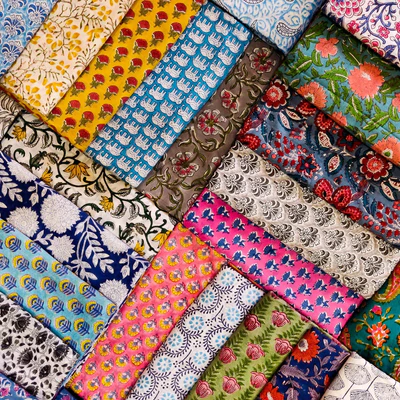The Pros and Cons of Sustainable Fabrics

Knowing how to build a fire is one of the most important survival skills you can learn. It will give you warmth, food and energy.
If you’re shopping for sustainable fabrics, watch for certifications like GOTS, GRS and Standard 100 by OEKO-Tex. These labels show that the material is ethically produced and free of toxic chemicals.
Recyclable Fabrics
Sustainable fabrics generally cause less environmental harm throughout their life cycle from design to manufacturing and subsequent disposal. This means they don’t require a lot of water or toxic chemicals, are non-toxic to wear, and can be reused without losing their quality.
They also don’t need to be washed as frequently as synthetic fabrics, which reduces the amount of water and energy used and the release of microplastics into the environment. As the demand for eco-friendly products increases, brands must switch to sustainable fabrics.
One of the best sustainable fabric choices is lyocell, a semi-synthetic fabric from cellulose in trees like eucalyptus. It’s a green alternative to cotton, which is highly water-intensive and requires high levels of pesticides and rayon, which uses toxic chemicals in its production omgblog.
It’s a great choice for sustainable clothing as it is breathable, soft, and drapes nicely. In addition, its production process is a closed-loop system that captures and recycles manufacturing solvents, reducing pollution and waste.
Biodegradable
Many fashion brands have tried reducing their environmental impact for years by using greener versions of traditional fabrics like cotton or polyester made from petroleum. Natural fibers like organic cotton and linen or sustainable sourced Tencel (made from wood pulp) are typically more eco-friendly than synthetic materials. Still, some brands are also working on new fabric options using everything from fruits to algae.
Hemp is another sustainable option because it requires minimal water, pesticides and fertilizers. It’s also a very soft material that gets even softer with each wash and is naturally anti-bacterial, odor-free and moisture-resistant.
Some brands even create plastic and ocean waste clothing, called eco-nylon or regenerated nylon. This is a great alternative to regular polyester as it uses fewer raw materials and produces less toxic chemicals. This type of fabric is often made from recycled plastic bottles, which helps divert them away from landfills. It also contains some biodegradable cellulose, which makes it a sustainable choice. Aside from its environmental benefits, this fabric is comfortable and durable for everyday wear.
Fair Trade
As people continue to strive towards a more sustainable lifestyle, fabric companies are starting to take notice. Whether it’s reducing the carbon footprint of manufacturing or offering more eco-friendly materials, switching to sustainable fabrics can have a big impact.
Sustainable fabrics often use less water in production, which greatly benefits the environment. They also use fewer chemicals and may recycle their dyes to reduce the amount of waste they produce. They’re also designed to last longer, challenging the fashion industry’s current throwaway mentality and promoting ethical production practices.
Additionally, many sustainable fabrics are fair trade certified. This means they are sourced with the well-being of producers in mind, from farmers to workers. They also follow strict environmental standards like not using GMOs, synthetic pesticides or chemical fertilizers, and implementing water and energy conservation programs. They also promote environmental sustainability by minimizing chemical and water usage, using closed-loop systems that recycle or reuse chemicals and utilizing recycled fibers such as cotton linters and corn husks (a lignocellulosic thread generally discarded as waste). This minimizes the need for raw materials and energy.
Non-toxic
Sustainable fabrics are made from natural materials and can be sourced without chemicals. This means they don’t release harmful toxins into the air or water during manufacturing. This is especially important for brands who want to show that they care about the planet.
For example, bamboo fabric is an eco-friendly material made from fast-growing bamboo shoots and a non-toxic chemical-free processing method. It is soft, breathable and highly absorbent — perfect for clothing and bedding. Another eco-friendly fabric is organic cotton, grown with no pesticides or fertilizers and uses less water than conventional cotton. This helps to ensure that the workers who harvest it are safe and that our water bodies and food supplies remain uncontaminated.
Wool is another great sustainable option. It is a natural, renewable fiber that can be repurposed and durable. Plus, it reduces the need for fast fashion replacements and helps to combat climate change by sequestering carbon.
Eco-friendly
Using sustainable fabrics is the best way to show that you care about the environment. Research has shown that consumers would stop using a brand that doesn’t care about environmental matters, so incorporating sustainable fabrics is an excellent way to demonstrate your commitment to sustainability.
Sustainable fabrics are made with minimal water and energy during production. This can include more efficient farming methods, less water-intensive dyeing techniques and closed-loop systems for reducing the waste of chemicals used in manufacturing.
Linen is one of the most underrated, eco-friendly fabrics out there. It requires no pesticides or fertilizers and uses very little water compared to some thirstier fibers. It’s also compostable and able to be recycled many times over.
Other eco-friendly fabrics to look out for include hemp, organic cotton and pineapple leather. This vegan fabric uses sustainable pineapple waste and avoids animal products altogether. The material is incredibly soft and can be made into various clothing. It’s also biodegradable and non-toxic. Another eco-friendly alternative is rPET polyester, produced from recycled plastic bottles.





